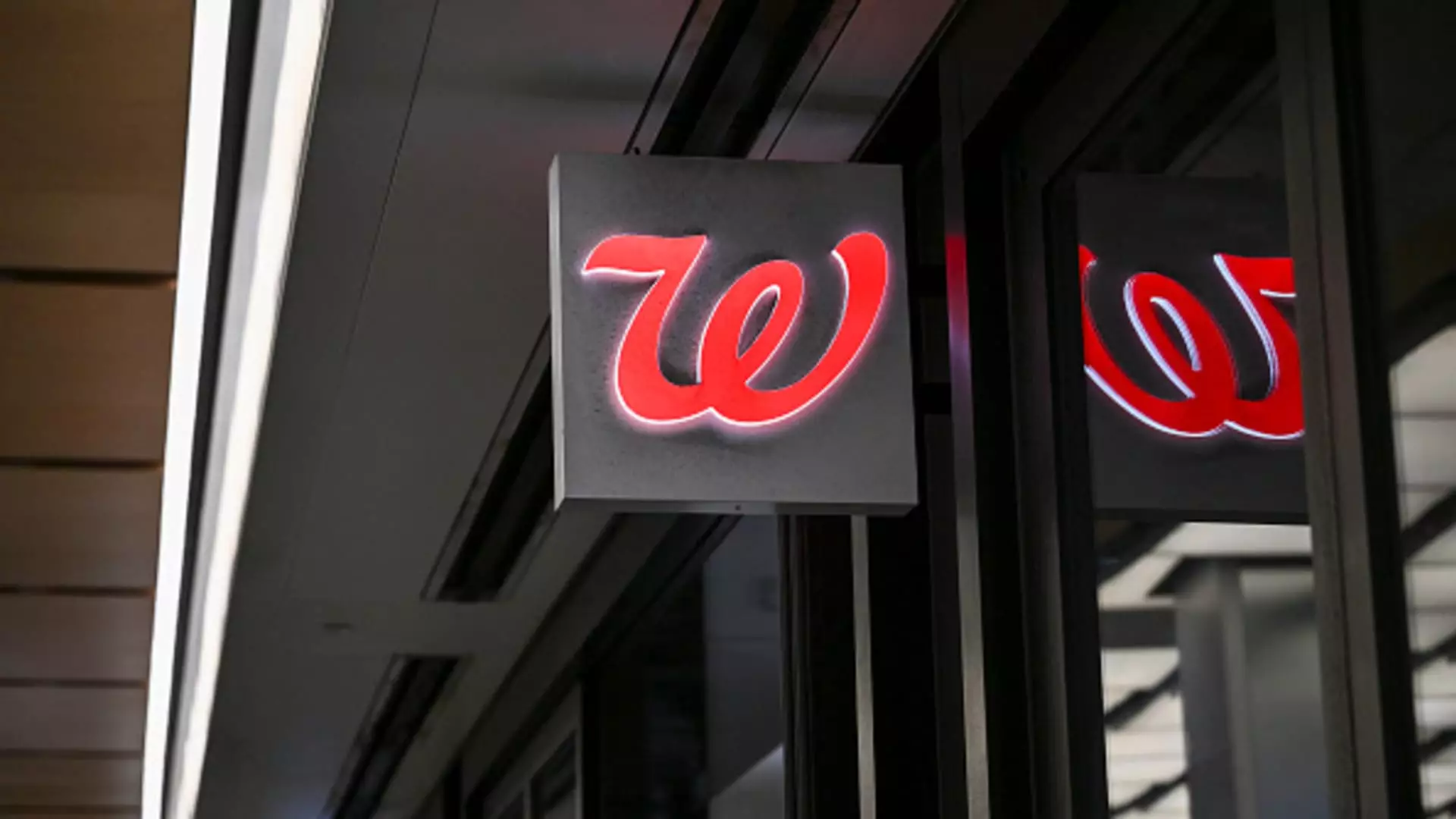In a landscape where the retail pharmacy sector is rapidly evolving, Walgreens finds itself at a critical juncture. With recent fiscal second-quarter earnings exceeding analysts’ expectations, one might think the company is on an upward trajectory. However, beneath the facade of success lies a narrative fraught with challenges and weaknesses that reveal more about the long-term viability of this once-stalwart public company. The impending $10 billion acquisition by Sycamore Partners will usher Walgreens into private ownership, ending a public saga that dates back to 1927. This transition, while gleaming with potential, does not mask the realities of an industry plagued with fierce competition, diminishing customer loyalty, and a string of missteps that have left the company grappling for stability.
Unraveling Financial Performance
Despite reporting earnings of 63 cents per share—higher than the anticipated 53 cents—it’s essential to scrutinize the context behind these figures. The revenue of $38.59 billion, although a 4.1% increase year-over-year, masks a troubling net loss of $2.85 billion for the quarter, indicating that the financial landscape is still riddled with peril. Legal settlements related to opioid lawsuits, coupled with substantial operational losses and a drop in front-end sales, reflect an organization that is battling pervasive issues rather than celebrating genuine success. Furthermore, the company’s strategic retreat from public view raises critical questions about what the future holds once the dust settles. Will the management be capable of executing a turnaround that adequately reassures stakeholders about long-term growth?
The Cost-Cutting Dilemma
The aggressive cuts being undertaken by Walgreens are emblematic of an industry desperate to reclaim profitability. With the pharmacy business facing reimbursement headwinds and intensifying competition from giants like CVS and retail behemoths like Amazon, Walgreens’ decision to shutter stores and pare down expenses is a calculated attempt to stay afloat. However, such drastic measures can be double-edged swords. While they may deliver short-term savings, they could alienate loyal customers and impair brand perception in the long term. The strategic focus should not merely be on slashing costs but on innovating the business model to make it more resilient against evolving consumer behaviors.
False Starts in Healthcare Expansion
As Walgreens attempts to pivot into healthcare, the challenges multiply. Previous investments in initiatives like VillageMD highlight an ambition to diversify services, yet the overwhelming legal and financial burdens overshadow these aspirations. The reported charge of $4.2 billion due to losses in value emphasizes the precarious nature of these ventures. The company’s movement toward a more primary care-oriented approach appears fraught with peril, especially when its core retail operations are floundering. Turning a loss-generating pharmacy entity into a competitive healthcare provider, without a coherent strategy, seems not only unrealistic but distressingly risky.
Future Outlook and Investor Sentiment
The expected closure of the Sycamore Partners deal presents a pivotal moment for Walgreens. However, the decision to withdraw fiscal 2025 guidance underlines underlying instability. While the incoming leadership may steer the company toward rejuvenation, there’s a palpable skepticism about their ability to harmonize cash needs with the necessity for innovation. The market reacts with a superficial optimism—witness the slight uptick in shares—but investors would be wise not to allow momentary gains to obscure deeper systemic risks. The true test awaits beyond the acquisition, where legacy burdens must confront a rapidly transforming landscape.
The Road Ahead: A Reckoning for Walgreens
With shifting consumer preferences and heightened competition, Walgreens stands on a precipice that could define its trajectory for decades. As it embarks on this uncharted territory of private ownership, one can only hope that it discerns a future path that transcends mere survival. A culture of excellence, integrated with a meaningful grasp of consumer needs, must replace the current reactive framework that characterizes its operations. If Walgreens is to regain its status as a leader, it must balance cost-cutting measures with strategic innovation, ensuring that its legacy is not marred by a descent into obscurity but rather transformed into a beacon of resilience in a fiercely competitive market.

Leave a Reply